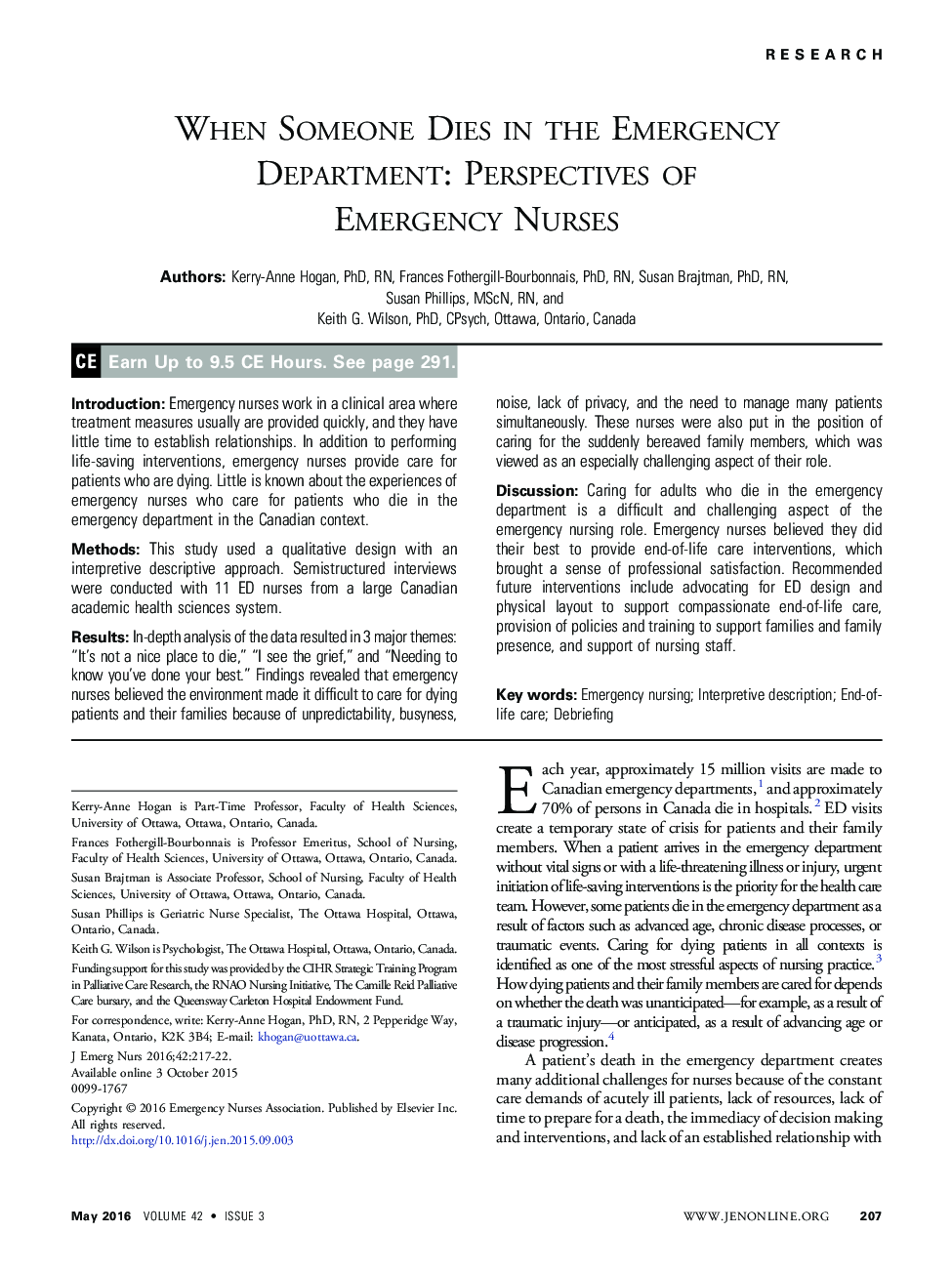| Article ID | Journal | Published Year | Pages | File Type |
|---|---|---|---|---|
| 5863361 | Journal of Emergency Nursing | 2016 | 6 Pages |
IntroductionEmergency nurses work in a clinical area where treatment measures usually are provided quickly, and they have little time to establish relationships. In addition to performing life-saving interventions, emergency nurses provide care for patients who are dying. Little is known about the experiences of emergency nurses who care for patients who die in the emergency department in the Canadian context.MethodsThis study used a qualitative design with an interpretive descriptive approach. Semistructured interviews were conducted with 11 ED nurses from a large Canadian academic health sciences system.ResultsIn-depth analysis of the data resulted in 3 major themes: “It's not a nice place to die,” “I see the grief,” and “Needing to know you've done your best.” Findings revealed that emergency nurses believed the environment made it difficult to care for dying patients and their families because of unpredictability, busyness, noise, lack of privacy, and the need to manage many patients simultaneously. These nurses were also put in the position of caring for the suddenly bereaved family members, which was viewed as an especially challenging aspect of their role.DiscussionCaring for adults who die in the emergency department is a difficult and challenging aspect of the emergency nursing role. Emergency nurses believed they did their best to provide end-of-life care interventions, which brought a sense of professional satisfaction. Recommended future interventions include advocating for ED design and physical layout to support compassionate end-of-life care, provision of policies and training to support families and family presence, and support of nursing staff.
